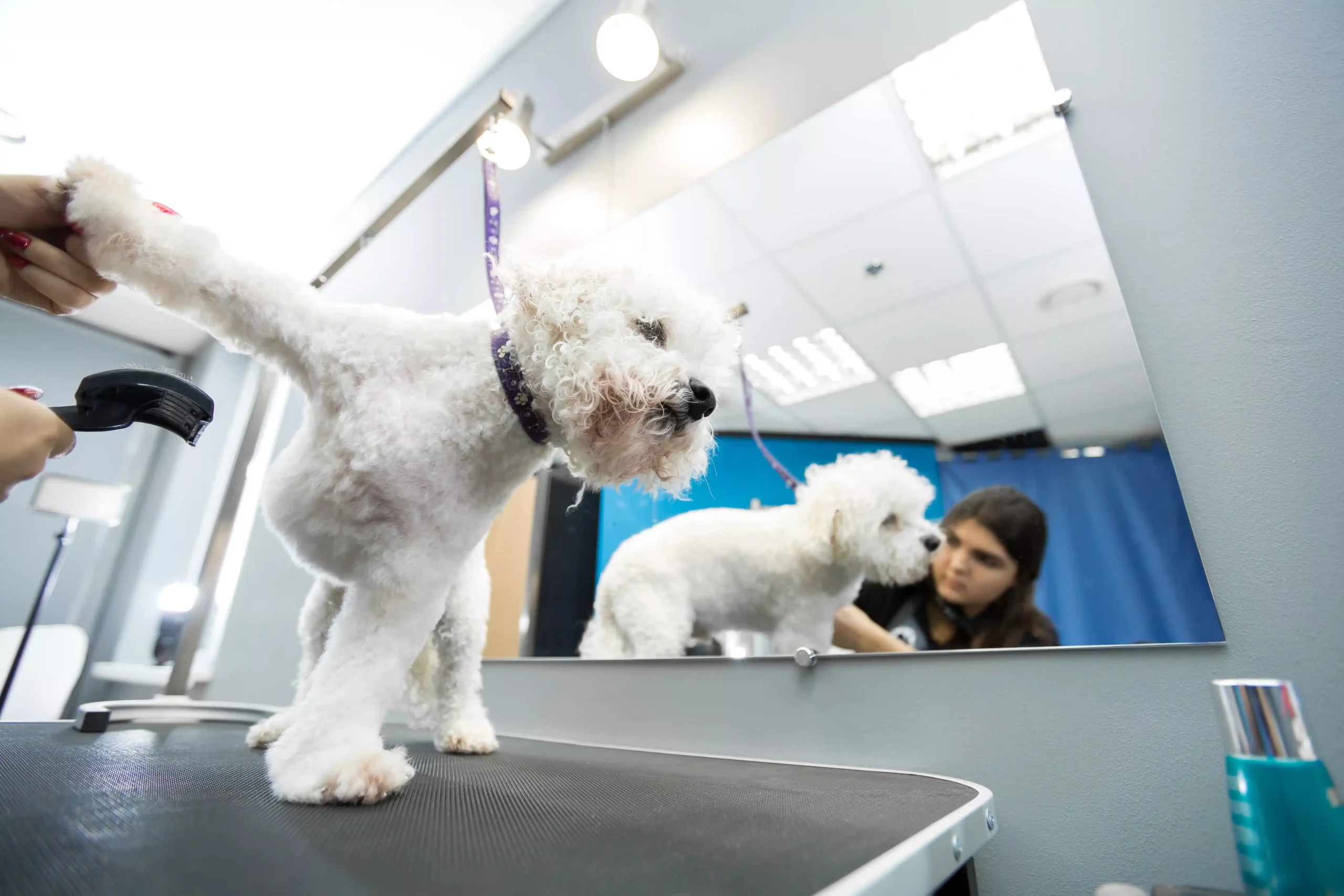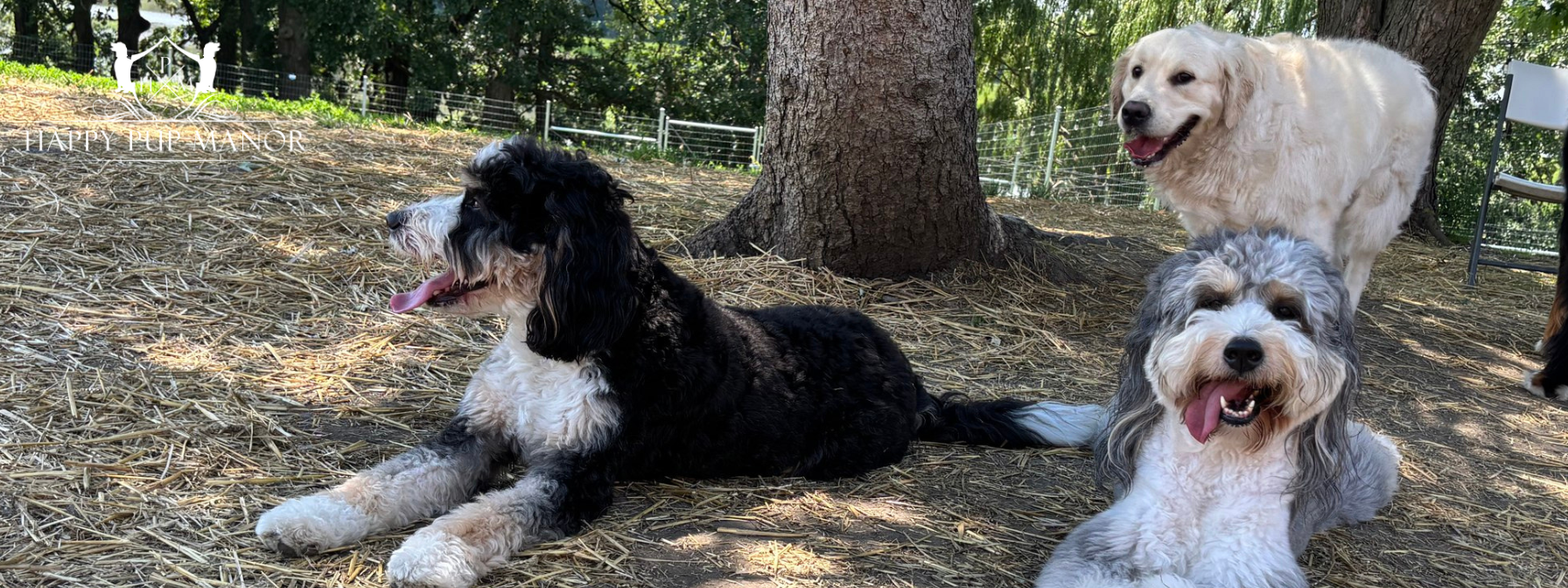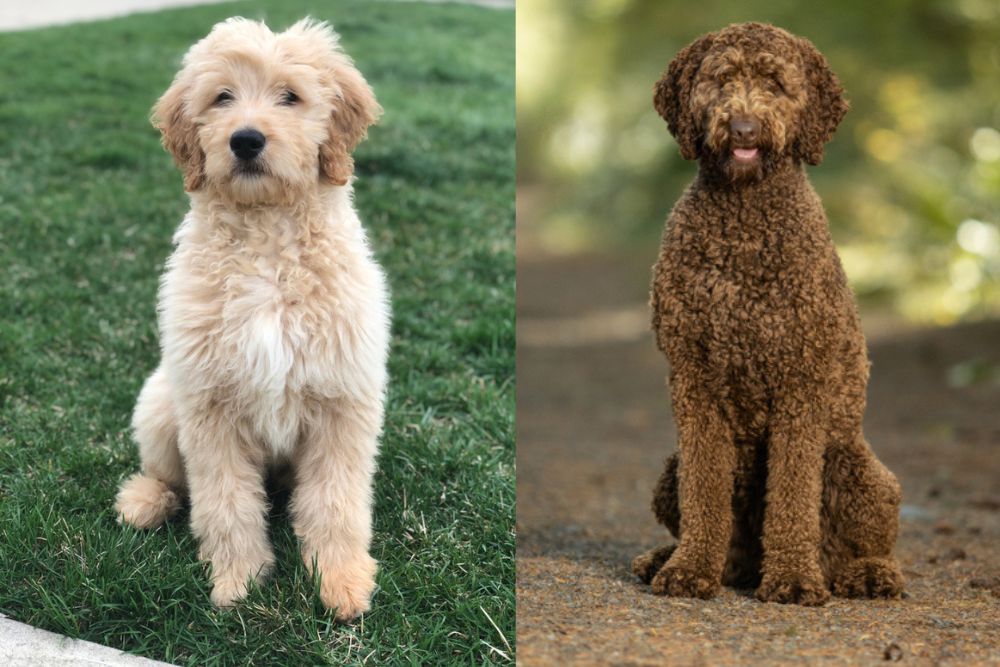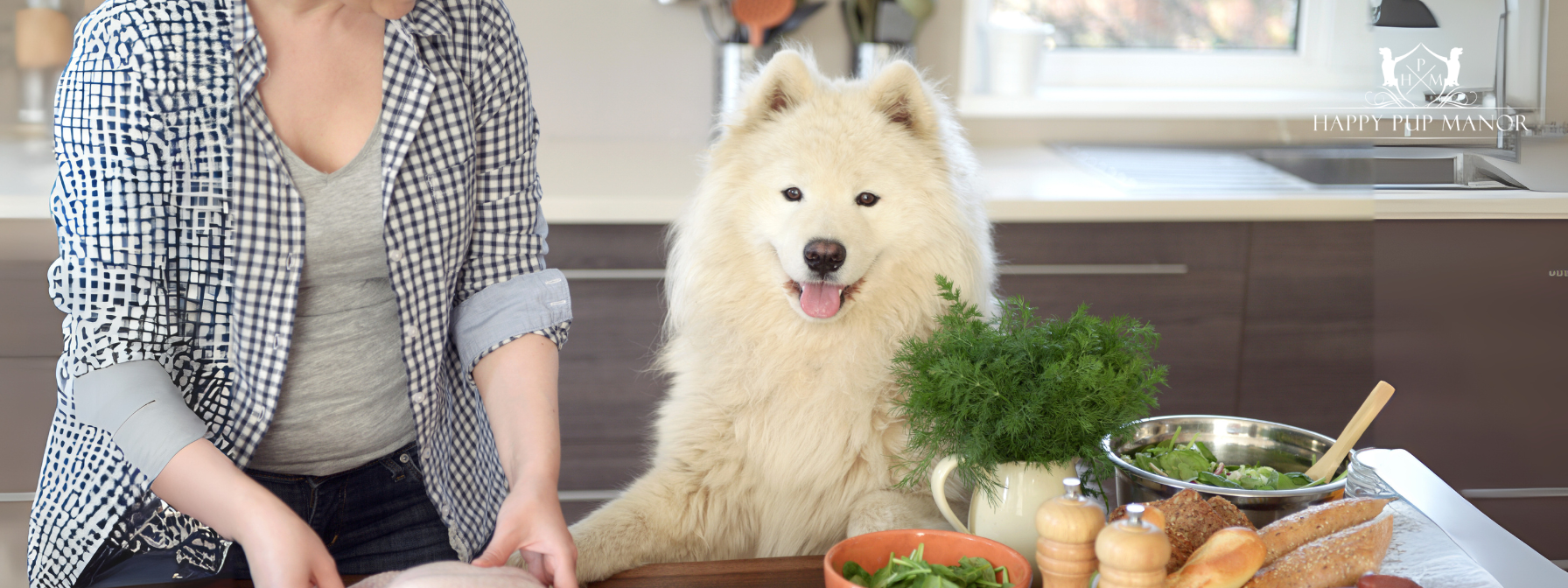Night Routine for Your Dog: How to Wind Down With Ease
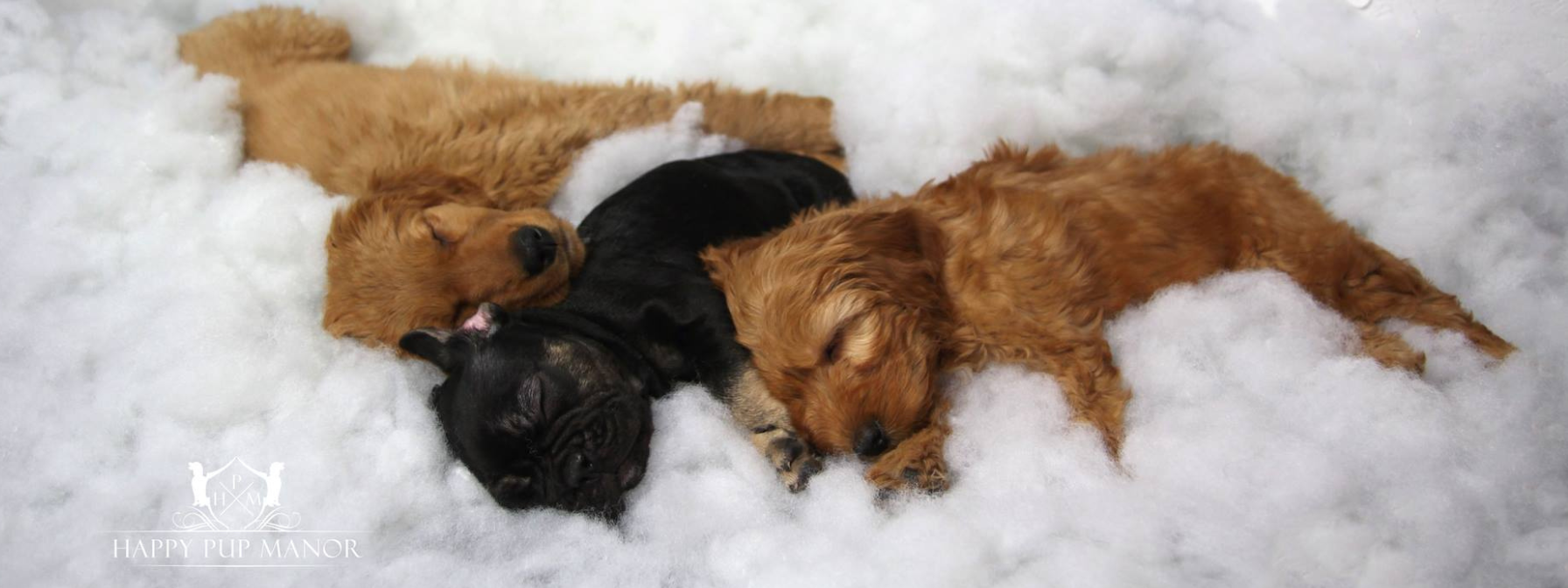
Night Routine for Your Dog: How to Wind Down With Ease
Just like us, dogs thrive on routine. Whether you’re raising a puppy or sharing your home with a seasoned canine companion, establishing a thoughtful night routine for dog can dramatically improve their sleep quality, behavior, and overall well-being.
Here at the Manor, where every pup is treated like family, we’ve seen firsthand how structured evenings can create a profound sense of calm and security. A well-planned bedtime routine doesn’t just help your dog rest–it also nurtures trust, reinforces training, and gives you both a peaceful close to the day.
Should Dogs Have a Bedtime Routine?

Absolutely. Dogs are creatures of habit. A consistent bedtime routine helps your pup know when it’s time to relax, reducing nighttime anxiety and encouraging deeper, more restful sleep. According to the American Kennel Club, dogs benefit from predictable schedules, which reinforce training, promote emotional stability, and help set expectations around sleep and activity.
Establishing a regular night routine for dog doesn’t just help them feel safe–it also sets boundaries and reinforces their place within the family dynamic. From an early age, dogs begin to associate specific cues with rest time, whether it’s a dimming of the lights, the sound of brushing teeth, or the rustle of their favorite blanket. These small signals make a big difference in helping your pup ease into a restful night.
Here are just a few of the benefits of a consistent night routine for dog:
🐾 Improved sleep quality and fewer nighttime disruptions
🐾 Reduced anxiety and overstimulation before bedtime
🐾 Faster housetraining results, especially in puppies
🐾 Stronger bond between dog and owner through routine interaction
🐾 Reinforced obedience and structure, making overall training more effective
🐾 Better behavior during the day due to well-rested, emotionally balanced dogs
Whether your dog is boarding with us or snoozing beside you at home, a calming evening ritual provides the gentle wind-down they need. A consistent night routine for dog creates predictability that builds trust, reduces overstimulation, and fosters long-term emotional balance.
What Is a Good Bedtime for a Dog?
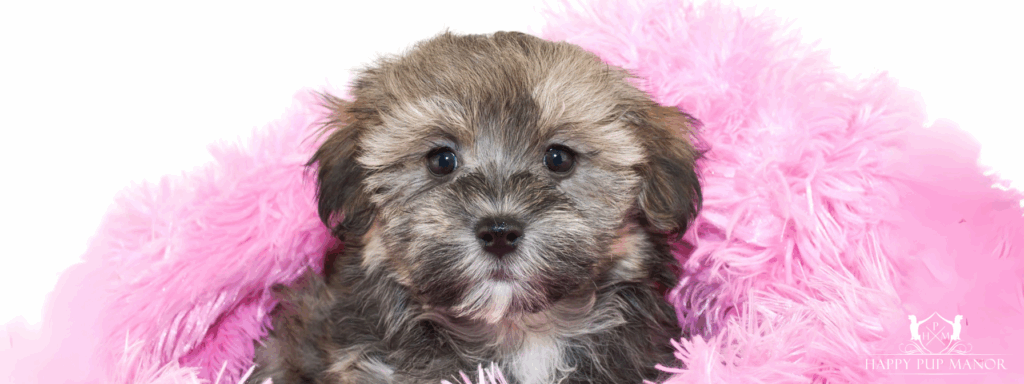
While there’s no one-size-fits-all answer, most adult dogs thrive when they go to bed between 8:00 PM and 10:00 PM, depending on your household’s schedule. Dogs naturally sleep anywhere from 12 to 14 hours a day–more for puppies and seniors–so the focus should be less on the exact hour and more on consistency. By sticking to a regular bedtime, you help regulate your dog’s internal clock, which encourages calm behavior in the evening and reduces unwanted habits like pacing or barking at night.
You may be wondering, “What is a dog’s natural sleep schedule?” Dogs are considered diurnal, meaning they’re most active during the day like humans. However, they are also polyphasic sleepers, taking several naps throughout the day and night. Because of this fragmented sleep pattern, it’s especially important to establish clear boundaries around nighttime to ensure your dog gets the uninterrupted rest they need to stay healthy.
A consistent night routine for dog that includes a reliable bedtime helps your pup feel grounded and secure. Knowing what to expect each evening provides comfort and reduces anxiety, making it one of the most effective ways to support your dog’s overall wellness and behavior.
How to Create a Bedtime Routine for Dogs
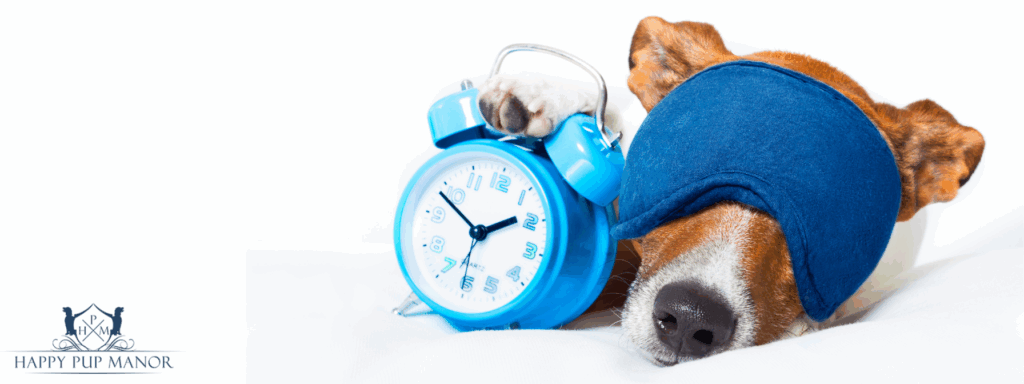
Designing a bedtime ritual doesn’t have to be complicated–in fact, the best routines are simple, consistent, and comforting. Think of it as a nightly rhythm that gently guides your dog from an active day to a restful sleep. Your goal is to create a sense of predictability and security, using small, familiar cues to let your pup know that the day is coming to a close.
Start with these calming, easy-to-follow steps to form the perfect night routine for dog:
1. Evening Walk or Light Play
A short walk or mellow play session about an hour before bed helps your pup burn off any lingering energy from the day. Physical activity paired with mental stimulation–such as sniffing around the neighborhood or playing a gentle game of tug–can calm your dog’s mind and body. This process mimics the natural rhythm of how dogs would wind down after a day of activity in the wild, helping them transition into rest more naturally. Just be sure to keep things low-key so your pup isn’t overstimulated right before bedtime.
2. Feeding Schedule
Wondering how close to bedtime should I feed my dog? It’s best to feed your dog at least 2–3 hours before bedtime to allow enough time for digestion and a final bathroom break. Giving your pup time to process their meal helps avoid potential discomfort, restlessness, or even late-night accidents. A well-timed evening feeding also contributes to a smoother bedtime routine–your dog can settle into sleep without the distraction of a full stomach or the need to go out soon after. If your schedule varies, try to keep feeding times within a predictable window to help regulate your dog’s internal clock and maintain consistency in their sleep rhythm.
3. Bathroom Break
A final potty trip before bed is essential–not only to avoid overnight accidents but also to signal to your dog that the day is ending. This simple step helps create closure and reinforces the bedtime routine. It’s a chance for your pup to empty their bladder and settle down without the discomfort of needing to go out during the night. For puppies and senior dogs especially, this step is key to achieving a full, uninterrupted night of sleep.
4. Winding Down with Grooming or Cuddles
Brushing your dog or offering gentle belly rubs is a meaningful way to signal the end of the day. These quiet moments provide not only physical comfort but also emotional reassurance. Incorporating soft touch, slow strokes, or a calm voice can soothe your dog’s nervous system, lowering stress levels and preparing them for sleep. This bonding time is particularly valuable for dogs with separation anxiety, as it reinforces your presence and helps them feel safe and settled before you part for the night.
5. Designated Sleep Space
Consistency is key. Where should a dog sleep at night? Ideally, your dog should sleep in the same comfortable spot every evening to build a strong association with rest. This could be a cozy crate that offers a den-like sense of security, a plush dog bed positioned in a quiet corner of your bedroom, or even beside you–if that aligns with your household rules and training goals. The key is to ensure that the space is calm, inviting, and free of distractions.
Should Dogs Sleep in the Dark at Night?
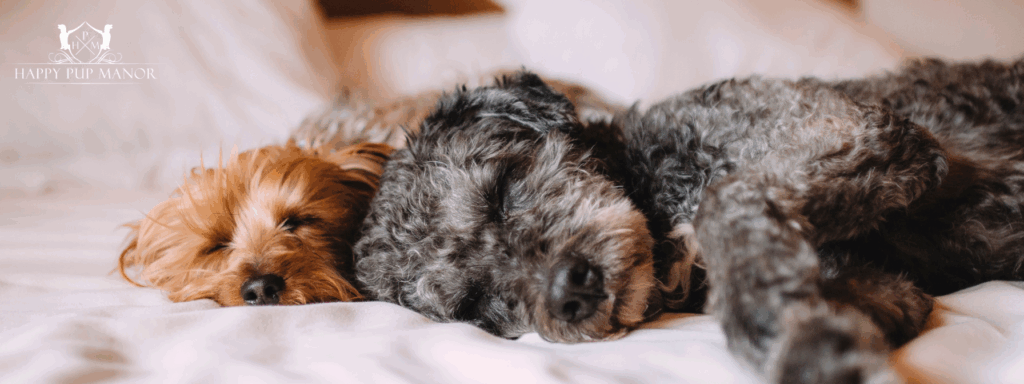
Yes–dogs should sleep in the dark at night. Darkness plays a crucial role in signaling to your dog’s body that it’s time to rest, primarily by triggering melatonin production, the natural hormone that regulates sleep-wake cycles. Melatonin not only promotes sleepiness but also supports your dog’s immune system and mood stability.
While dogs do have excellent low-light vision, constant exposure to artificial lighting can confuse their internal clocks. Bright lights, TVs, or glowing electronics in the room can interfere with your dog’s natural sleep signals. Creating a completely dark or softly lit environment helps eliminate unnecessary stimulation, supports deeper sleep, and reduces night-time restlessness.
You might consider using blackout curtains, crate covers, or turning off hallway lights to encourage a true nighttime atmosphere. For sensitive pups, a small, warm-toned nightlight away from the sleeping area can offer reassurance without disrupting rest. The goal is to replicate the calm and quiet of a natural night, helping your dog fall asleep faster and stay asleep longer–essential for both their physical health and emotional balance.
Should I Leave a Light On for My Dog at Night?

Unless your dog has a vision impairment or specific anxiety issues, there’s no need to leave a light on at night. Darkness offers a more natural, calming environment that helps regulate your dog’s internal clock and promotes better sleep. Too much light can interfere with melatonin production and lead to restlessness or disrupted sleep cycles.
If your pup startles easily or seems unsettled in total darkness, a soft, warm-toned nightlight placed away from their sleep area–such as in a nearby hallway–can offer subtle reassurance without being overstimulating. Be sure to avoid overhead or harsh lighting, as it can keep your dog alert when they should be winding down. The goal is to strike a balance between comfort and quietude so your dog can drift into sleep peacefully and stay asleep through the night.
Creating the Ideal Sleep Space for Your Dog
A comfortable sleep environment can make all the difference in helping your dog fall asleep faster and stay settled through the night. Whether you’re crate training a puppy or simply offering your senior pup a cozy retreat, creating a dedicated space for sleep sets the tone for relaxation and security.
Here are a few essentials to consider when building the perfect sleep space:
🐾 Supportive Dog Bed
Choose a bed that fits your dog’s size, age, and preferred sleeping position. Dogs who like to stretch out may prefer a flat, cushioned mat, while those who curl up often feel more secure in a donut-shaped bed with raised edges. Orthopedic options are especially beneficial for large breeds, senior dogs, or those with joint issues, as they offer extra support and pressure relief.
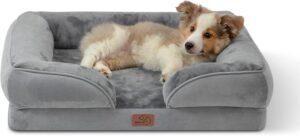
One well-reviewed option is the Bedsure Orthopedic Dog Bed, which features solid orthopedic foam and a cotton-padded rim to support the neck and spine. Look for memory foam materials and removable, washable covers for added comfort and hygiene. A well-chosen bed not only supports your pup’s body but also creates a dependable place they can retreat to night after night.
🐾 Calming Crate Covers
If your dog sleeps in a crate, a crate cover can transform the space into a calming retreat. It mimics the safety of a den by reducing visual stimulation, softening ambient light, and dampening noise. This sense of enclosure can help dogs feel more secure, especially those prone to anxiety or overstimulation. One highly rated option is the Pet Dreams Dog Crate Cover, which not only includes a breathable, durable cover but also comes with a padded crate bumper and mattress for extra comfort.
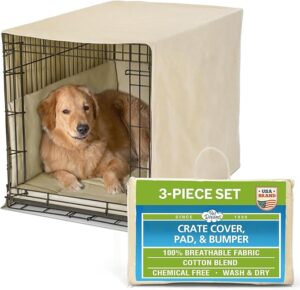
These additions provide a cushioned, enclosed environment that enhances the cozy, den-like feel–perfect for helping your dog feel safe and at ease. By covering the crate with a well-designed product like this, you help create a sleep space that encourages relaxation and signals to your dog that it’s time to rest. For many dogs, this simple addition can significantly improve their ability to fall–and stay–asleep throughout the night.
🐾 White Noise or Ambient Sound Machines
Dogs are far more sensitive to sound than humans, often picking up on high-pitched frequencies or subtle noises that we don’t notice. These sounds–whether it’s distant sirens, a car door slamming, or household activity–can easily startle them out of rest or prevent them from falling asleep in the first place. A white noise or ambient sound machine creates a soothing auditory backdrop that masks disruptive noises, helping your dog relax and stay asleep longer. This can be especially beneficial in busy households, city apartments, or multi-pet environments where unpredictable noise is common.
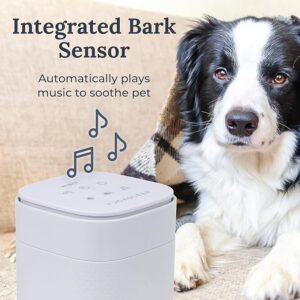
One product that many pet owners swear by is the Yogasleep Dohm Classic white noise machine. Its consistent, natural fan-based sound helps create a calming atmosphere without artificial tones or interruptions. Over time, the steady hum can even become a comforting sleep cue, letting your dog know it’s time to wind down and rest. Whether you’re building a new bedtime routine or supporting an anxious pup, adding soothing sound can be a small change with big benefits.
🐾 Snuggle Toys for Comfort
For puppies or dogs with anxiety, soft plush toys can be incredibly soothing, especially when introduced as part of their bedtime routine. One particularly effective option is the Snuggle Puppy toy, which includes a simulated heartbeat and heat pack to closely mimic the warmth and presence of a littermate. These features offer both physical and emotional comfort that can ease stress and create a calming bedtime experience.

For young puppies recently separated from their mother or litter, this familiarity can ease nighttime distress, reduce whining, and encourage self-soothing. For adult dogs, a well-loved plush toy can serve as a reassuring companion, helping them settle into sleep more quickly and sleep more soundly–especially when you’re not nearby. Whether you’re crate training, traveling, or just winding down for the evening, a snuggle toy can make a powerful difference in your dog’s ability to relax and rest.
Calming Spray
A final touch to elevate your dog’s sleep space is a gentle, pet-safe calming spray. These sprays typically contain natural ingredients like lavender, chamomile, or valerian root–scents known to promote relaxation in both humans and animals. A few spritzes on your dog’s bedding or around their crate can help reduce anxiety, ease restlessness, and create a soothing sensory cue that it’s time to wind down.

Calming sprays can be especially helpful for dogs who are new to a routine, recovering from travel or change, or sensitive to nighttime disturbances. One popular option is the ThunderEase Dog Calming Spray, which is clinically proven to mimic natural canine pheromones to reduce stress-related behaviors. This vet-recommended spray helps ease anxiety, barking, restlessness, and nervous pacing–especially at bedtime or in new environments. Simply spritz your dog’s bedding or crate area about 10–15 minutes before bedtime to create a gentle, reassuring sensory cue that it’s time to rest.
A comfortable sleep environment can make all the difference in helping your dog fall asleep faster and stay settled through the night. Whether you’re crate training a puppy or simply offering your senior pup a cozy retreat, creating a dedicated space for sleep sets the tone for relaxation and security.
Tailored Comfort, the Happy Pup Way
Creating a peaceful night routine for dog isn’t just about sleep–it’s about establishing a deep sense of trust, providing emotional security, and creating a nurturing environment where dogs can truly unwind. At Happy Pup Manor, we understand that each dog is unique, which is why we tailor every guest’s nighttime routine to reflect their home lifestyle, comfort preferences, and individual needs.
Our canine guests enjoy serene, private suites that feel like an extension of home. Outfitted with plush bedding, gentle lighting, and familiar comforts, each space is designed to promote restfulness and calm. Whether a pup is here for training, boarding, or both, our environment supports healthy nighttime habits and reinforces the routines they’re used to at home.
By recreating a predictable and comforting bedtime atmosphere–even in your absence–we help your dog maintain emotional balance and sleep soundly. It’s just one of the many thoughtful touches that define the elevated care experience at Happy Pup Manor, where wellness, routine, and luxury come together to ensure every dog feels safe, soothed, and deeply cared for.
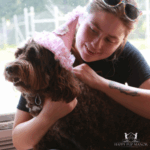
If you’re ready to give your pup the gift of personalized care and consistent structure–even while you’re away–we warmly invite you to explore our premier boarding and training programs.
Enroll your dog at Happy Pup Manor and experience the difference that tailored routines, compassionate trainers, and luxurious accommodations can make. Your pup deserves nothing less than the very best.



